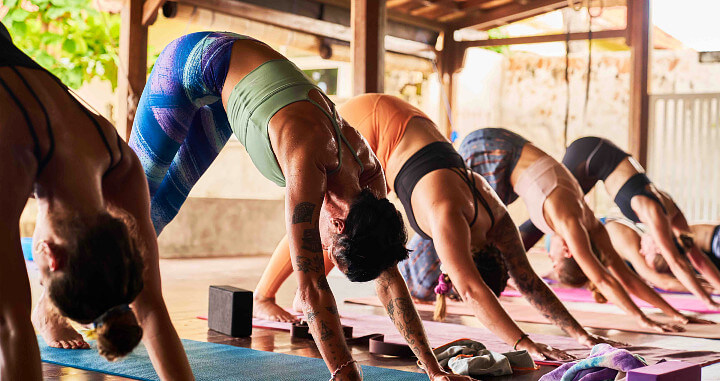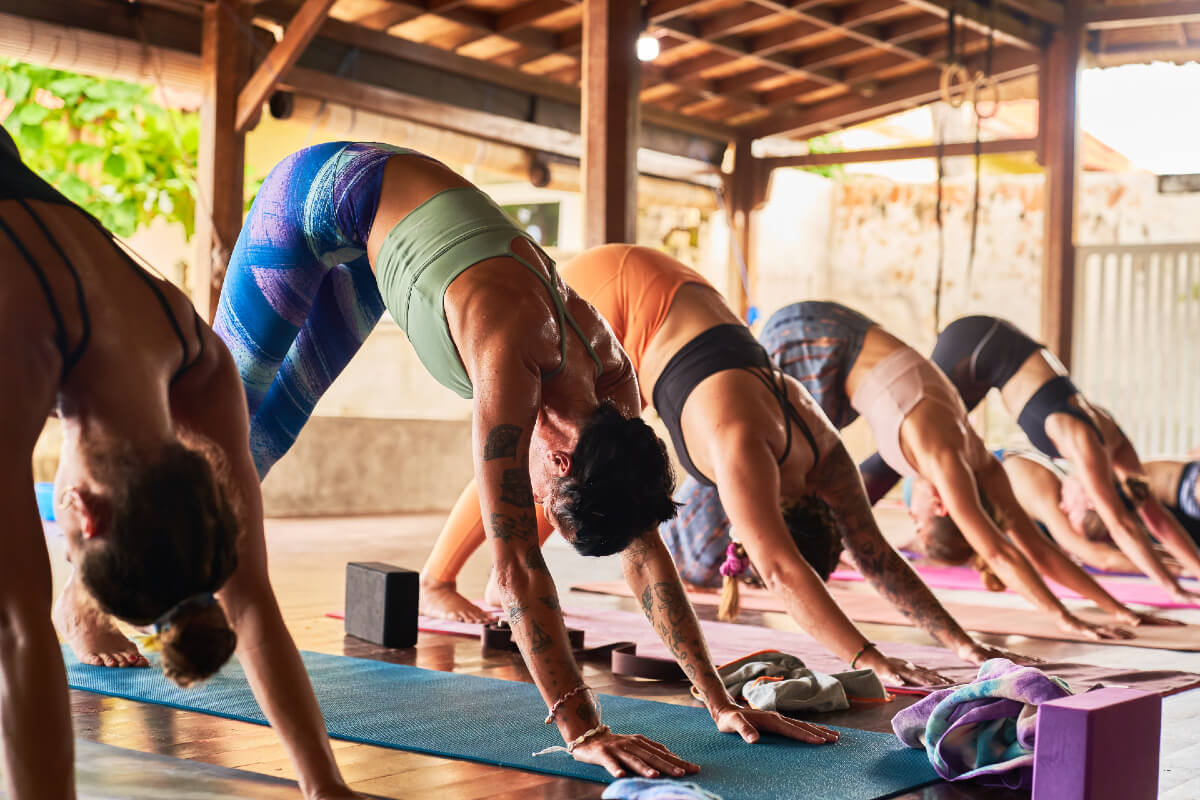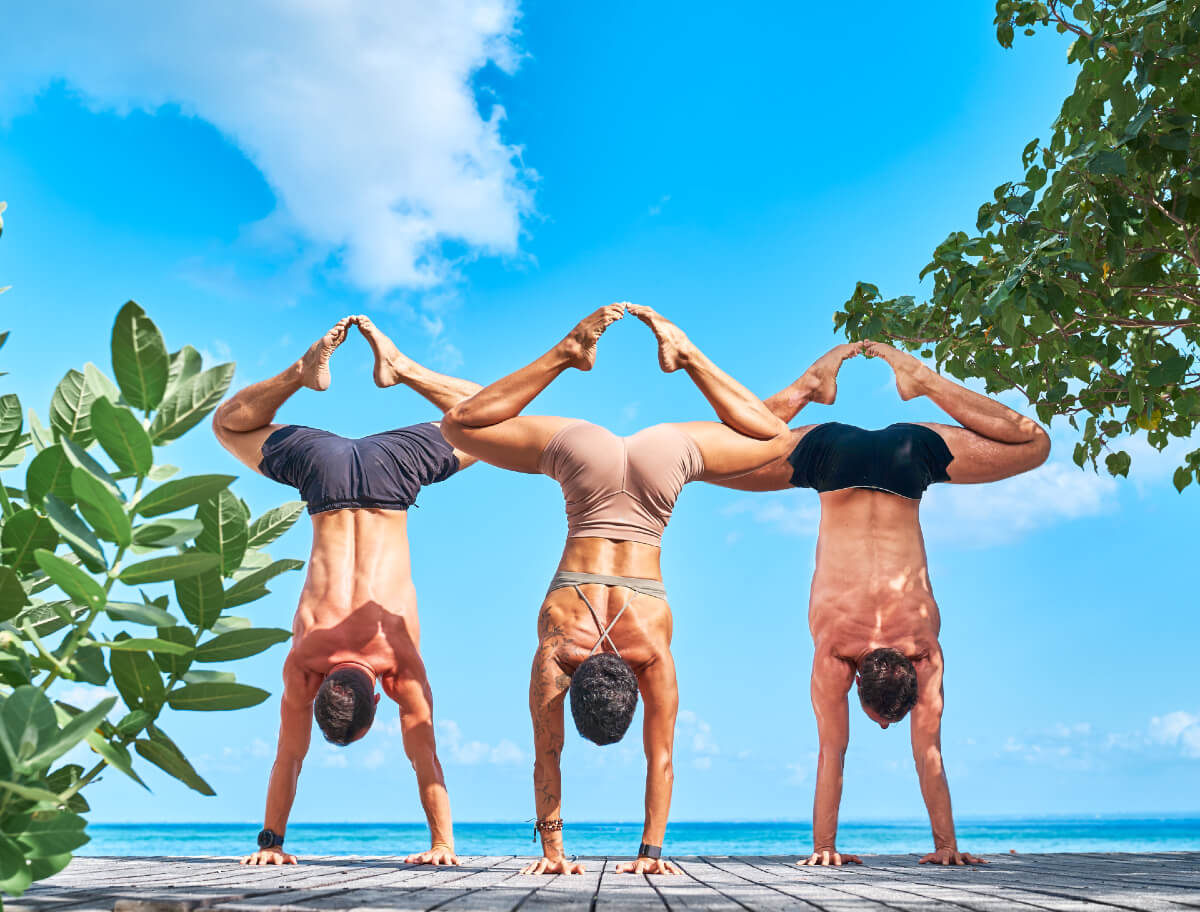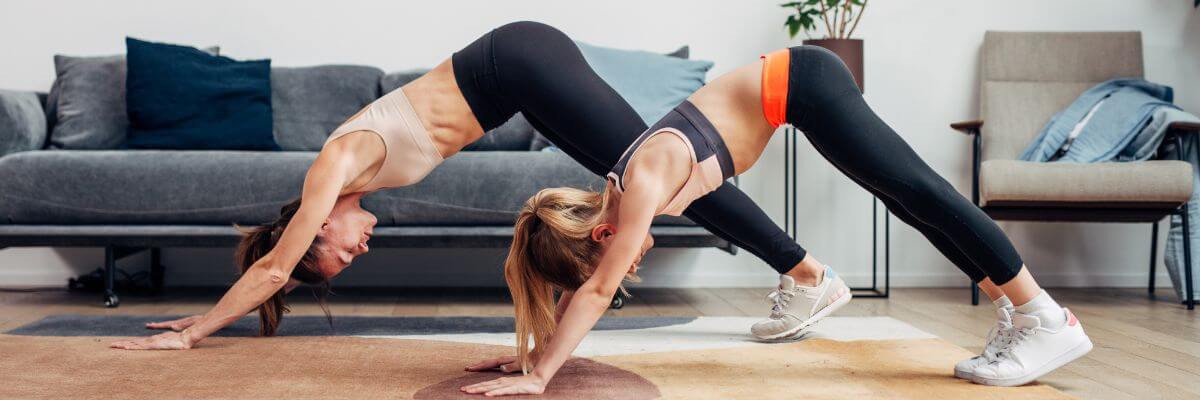Joining a yoga instructor certification course to become a Yoga Teacher is a big decision. It’s a huge investment, both in time and money. You might feel overwhelmed at the many choices of Yoga certification schools and Yoga teacher training programs.
Finding the best yoga certification course which will meet all your expectations can seem like a daunting task. It actually take quite preparation and more research than simply searching “yoga certification near me” in Google…
We are here to help you get more prepared and confident in your decision. By walking you through this step-by-step guide on choosing your 200 Hour Yoga Teacher Training. You will have all information needed to make the right choice to pick the best yoga teacher trainings certification for you.
Step 1: What to know before choosing a Yoga Instructor Certification Course
Let’s start with some basic concerns you might have about doing a yoga teacher training program:
1. How long do I need to have been practicing yoga for before joining a yoga instructor certification?
Contrary to what you might think, you don’t need to have been practicing yoga for years before joining a yoga teacher training. The most important thing is commitment to deepened your yoga education (including yoga philosophy and history). Having said that, you do need a certain level of fitness and stamina to be able to join, as yoga teacher trainings are intense, and you will be practicing for many hours each day. If you come from a fitness background then you might not need as much yoga experience (purely from a physical stamina level).
Generally we recommend at least 3 months of consistent yoga practice before embarking on a yoga teacher training. It’s also a good idea to have tried the style that you are going to train in (e.g. Ashtanga-Vinyasa, Hatha, etc.), before embarking on the course, as you might find that the style is not for you.
2. Is there an age limit? Am I too old/young to join a yoga teacher training?
There is no upper age limit on joining a teacher training for yoga. As long as you have the physical fitness to cope with a yoga education training (which is not affected by age!) then you should not feel put off, or think that you’re too old. It’s never too late to change careers, or to learn something new, and you might find your age is a benefit as, depending on where you work, many students who attend yoga classes are more mature, and may relate better to a more mature teacher.
On the other hand, don’t be worried about being too young to attend a training; as long as you have a certain level of emotional maturity (or are willing to develop it) then training at a young age just means you have so many more years ahead to develop and refine your craft!
3. Help, I’ve never taught before! What if I’m really nervous/shy about teaching?
It’s totally normal to be nervous about teaching your first class – remember, most people’s greatest fear is public speaking, so you’re not alone! Many people who attend a yoga teacher training program have no previous teaching experience whatsoever, and it has no bearing on how good a yoga teacher they will be in the end. A large part of teacher training for yoga is giving you the confidence to be able to teach, which is achieved through plenty of practice – teaching your fellow students during the course.
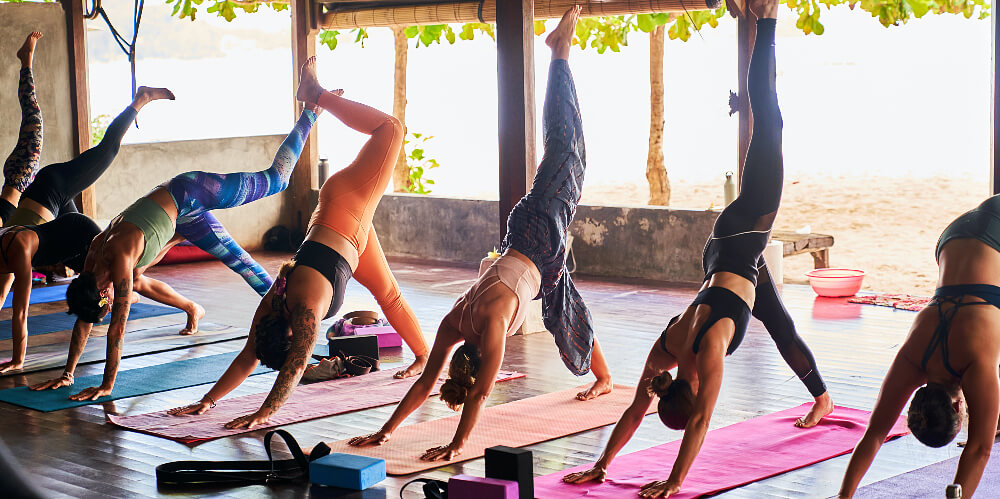
Teaching Yoga, like public speaking, is something that you will get better at, and be less nervous about, the more you practice. So the sooner you start the better!
4. What if I’m not good enough for the yoga instructor certification?
This is one of the biggest concerns people have on starting a yoga education program – that their own practice is not good enough, that they’re not flexible enough, strong enough, or can’t do fancy yoga poses (arm balances, handstands, etc.) yet. It’s easy to forget, in our current climate of “Insta yogis” who look more like contortionists/gymnasts, that yoga is not all about fancy asanas or getting your leg behind your head! It’s a much deeper, spiritual practice of self-awareness and self-development.
Besides, everyone’s bodies are different, and not all bodies will be able to do certain poses. And that’s ok. Great, in fact. You can show to your students and to the world that yoga truly is for every body – all body shapes and sizes. As long as you have a certain level of fitness/stamina, and a willingness to try, then you are definitely ‘good enough’.
5. What if I don’t intend on teaching yoga after the yoga teacher training? Is it still worth joining?
Many people who come on yoga teacher training programs do not want to become a registered yoga teacher, and that’s fine. Besides learning the skills for teaching, the training is also teaching you more about yoga itself (the philosophy and history) and helping to do to deepen your own practice. So you will still get a lot out of the course, even if you don’t want to teach.
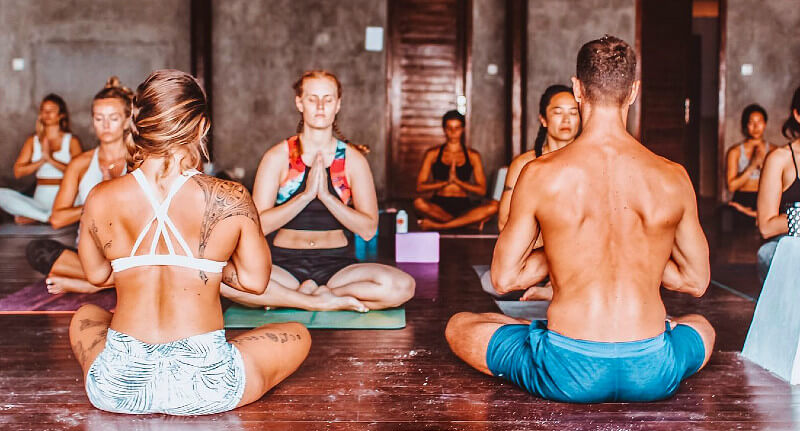
Many students start the yoga certification training not intending to teach yoga at first. But they often change their mind by the end of the yoga course! Whether or not you do, it will open doors for you in the future if you do reconsider your decision down the line.
6. Is the yoga teacher training course open to men?
Absolutely! You might think that the majority of yoga practitioners these days are women, but actually this really depends on where you end up teaching. In fact, historically, the most famous yoga teachers in India were men (there was not this gender-disparity much further back in the past, when both sexes practiced yoga equally).
Nowadays there are several prominent male teachers with large social media followings, and you may find a niche for yourself in encouraging more men to practice in your local area.
7. I’m pregnant, can I still join the yoga certification course?
If you are pregnant, or planning on becoming pregnant soon, it is not recommended to enroll in such a vigorous training, unless you are an extremely advanced and experienced yoga practitioner (and even then, it would not be recommended in the 1st trimester). Instead, it would be better to enroll in some prenatal yoga classes, and wait until post-birth, when you are back into your yoga routine, before joining a 200hr training.
8. Can I teach immediately after the teacher training for Yoga? Do I need extra certification to teach?
By joining a reputable registered Yoga school, you will be ready to teach immediately upon graduating from your yoga certification training, however you can then choose to become certified with Yoga Alliance after your teacher training for Yoga. You don’t have to be a Yoga Alliance certified teacher in order to teach, although you might find that certain employers/studio owners do require this in order to hire you.
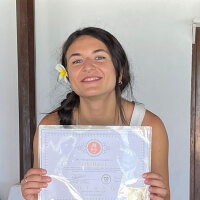
If you think you want to become a yoga trainer in the future (lead a teacher training for yoga) then you need to be YA certified. There is a yearly membership fee, and you would be required to undertake continuing yoga education to retain your Yoga teacher training. You can find out more information here: https://www.yogaalliance.org/
9. What kind of Yoga mat should I bring?
While it may be tempting to go out and buy a fancy, expensive new mat for your teacher training for yoga, be aware that you may be required to draw on your mat as part of training, so it might be a hard lesson in non-attachment! On the other hand a really cheap mat may fall apart in the heat (if you are training in a tropical climate), and because you will be using it for many hours every day.
You will also be sweating a lot (due to both the heat and intensity of the training) so a mat that is designed for hot yoga, where you won’t be slipping all over the place, might be a good idea (or you can also bring yoga towels). Since most people will be traveling to their yoga teacher training course from another country bear in mind the weight of your mat, and whether it will fit into your suitcase/rucksack.
10. What does a typical day look like in the All yoga instructor certification course?
| TIME | ACTIVITY |
|---|---|
| 07:30 – 10:30 | Morning study (meditation, pranayama & asana practice) |
| 10:30 – 12:30 | Brunch break |
| 12:30 – 14:30 | Lecture (Philosophy, Anatomy, Group discussion) |
| 14:30 – 15:00 | Tea Break |
| 15:00 – 17:00 | Asana clinic (elements of teaching with group work) |
| 17:00 – 18:00 | Yoga practice (led class or Mysore practice) |
11. Where in the world should I train (and when)?
Nowadays you can pretty much find a yoga teacher training in every country around the world, so the world is your oyster when it comes to where to train!
Wherever you choose, make sure you have researched the registered yoga school and feel confident in the quality of teaching being offered.
When to go to the yoga teacher training for Yoga?
When you go will depend on the country you choose, and if you want to avoid their wet season (which most people do), as well as what kind of weather you enjoy, and when you can get time off! For India and Thailand, generally November to February is the best time (although it depends what part of the country you are visiting), while Bali is best enjoyed in its dry season, from April to October.
12. How much should I budget for the yoga instructor certification program?
- Besides the course itself, your travel costs, and your accommodation, there are a couple of other things you need to budget for:
- Food – most teacher training for yoga do not include food (except perhaps a light lunch, fruit, snacks ( such as dates , nuts, etc.) and tea throughout the day) so you’ll need to budget for daily breakfasts and dinners. The costs depend on which country you decide to train in. Also factor in bottled water, as there might not always be facilities for refilling your water bottle (although most places are getting better at providing this).
- Visas – check whether you need a visa to travel to the country you’ve chosen for your training, and make sure to apply for it in plenty of time. If you are within the time limit for not needing a visa but then decide at the last minute to stay on after the training, you might need to buy a visa when you’re already there (which can sometimes be more expensive than buying it before you leave your home country), or pay to extend your visa, so factor this into your budget.
- Laundry – you will be sweating a lot, and may need to change your yoga clothes twice a day (or more!) so you may need to pay to get your clothes washed several times a week. The cost varies depending on your hotel or the location of the training. If you didn’t bring appropriate clothing for the climate you may also need to buy more when you’re there so it’s good to have some space money for this just in case.
- Vaccines – this depends on the country you’re training in, as well as the guidelines of your home country and your own preferences. Depending on your home country you may need to pay for each vaccine you need, so be sure to check in advance.
- Onward travel – if you decide to stay on after your training, or to go travelling afterwards, you will obviously need extra money for any extra accommodation, food and travel.
13. What style should I train in?
Most 200hr yoga teacher trainings are in Hatha yoga, Vinyasa yoga, or Multi style.
Hatha yoga today has become somewhat of a ‘catch-all’ category to describe the general ‘flow’ yoga that you can find in most studios in the West. In general though, Hatha is slower paced than most vinyasa classes, and poses are usually held for several breaths.
Vinyasa yoga is a ‘flowy’ style of yoga very popular in the West today. Often accompanied by music, vinyasa classes flow from one posture to another without holding the poses. The emphasis is on combining breath and movement (one breath for one movement) in a meditative but usually fast paced routine.
Ashtanga-Vinyasa yoga is the physical yoga practice descended from the Ashtanga Yoga lineage; an ancient philosophy over 5,000 years old, developed in Mysore, India, by the late Pattabhi Jois. The practice of Ashtanga Vinyasa is defined by the connection of breath with movement in a flowing sequence. Asanas are performed in a specific order, whereby each pose prepares the body for the next. There are 6 series within Ashtanga-Vinyasa, and students must master each series before moving on to the next.
Training in Ashtanga-Vinyasa provides great foundation for your yoga education, as well as helping you cultivate strength, flexibility and a focused mind. Learning a fixed sequence is also a useful foundation and helpful structure for when it comes to planning future yoga classes.
Step 2: Busting some common myths about yoga certification course.
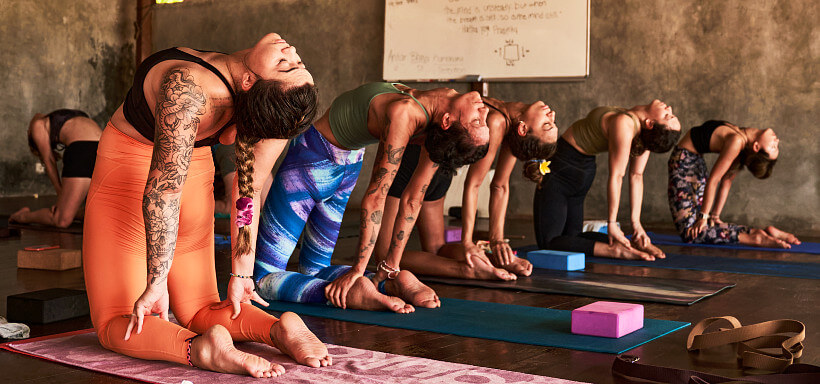
Now that we’ve answered many burning questions, and hopefully got most of your concerns out the way, let’s bust some of the common myths around yoga teacher trainings, so that you know exactly what to expect (and what not to expect!).
1. You need to be able to do handstands, acrobatics, and get your legs around your head.
This is one of the main concerns that yogas student have about attending a yoga instructor certification course. But it is absolutely not true! It doesn’t matter whether you can do handstand or not, nor how flexible or strong you are. As long as you have a willingness to learn and to have a go, then you’ll discover that you don’t always need to be able to do a pose yourself to be able to teach it.
What’s more, all bodies are unique, and some bodies won’t be able to do certain poses. As someone who gets this, you’ll be an even more compassionate and relatable teacher, and be able to make your classes more inclusive. And after all, the end goal of yoga is to be able to sit in meditation, so the poses themselves are not everything!
2. You have to have practiced for many years, and have a rigorous practice.
You definitely don’t need to have been doing yoga every day for the last 5 years before you can join a yoga teacher. training! All we ask is around 3 months’ consistent practice (that means at least 3 times a week) unless you have a movement background, in which case less time might be fine. As long as you have a basic level of fitness, your commitment is more important than your experience.
3. You need to be skinny/have abs/be super fit.
Yoga bodies come in all shapes and sizes! You absolutely don’t need to have a ‘six pack’, or train for marathons…. just a basic level of fitness and dedication to practicing what you learn. It’s really important as a teacher to be mindful of different bodies not only when it comes to adjusting but also anatomy-wise, as not all bodies will be able to do certain poses, and respecting/honouring that is very important.
4. You must be vegan.
Everyone’s journey to yoga is different; some may have come from a more spiritual or traditional background, practicing ‘ahimsa’ (non-violence to all living creatures), and others from a movement or physical health perspective. You will not be shamed for not being vegan on a yoga teacher training, although often the food served at the training is traditionally vegetarian, and you might be encouraged to try sticking to a vegetarian diet for the duration of the training. Either way, coming with an open mind, and respecting others’ journeys is all that is asked of you.
5. You must be kitted out with the best and latest gear (mat/yoga clothes/props, etc.).
This is definitely not true! You don’t need to be an ambassador for Lululemon to join a training… if you do have any props that are essential to your practice you may want to bring these, although check first what props (if any) are provided by the school. Otherwise see above regarding what mat to bring, and, as for clothes, just bring what you are comfortable in, as long as it’s appropriate for the weather and climate of the training.
6. Everyone will be young, slim females.
This is another misconception, exacerbated by social media images of young slim women doing fancy yoga poses, but doesn’t represent the diversity of yoga practitioners, nor the diversity of people who choose to do a yoga teacher training. The more we can do to spotlight and celebrate diversity within the yoga community the more we can bring yoga and its benefits to every body.
Step 3: How to pick the best Yoga Instructor Certification course.
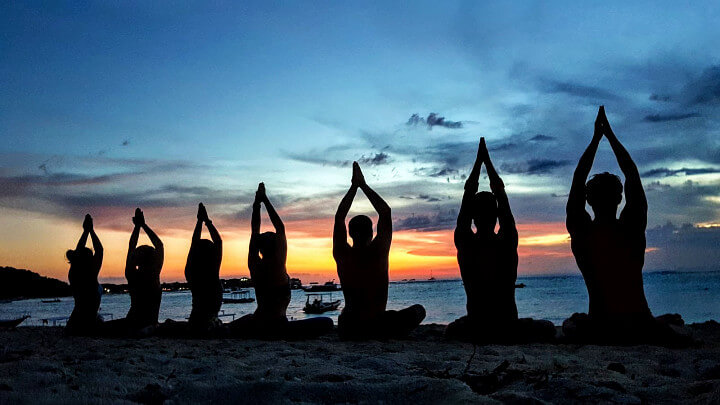
By this point you’re probably desperate to sign up and get started on your yoga journey! But the most important part is still to come – how to actually choose the best yoga school, and yoga teacher training, for you! Unfortunately, not all trainings are created equal, and the last thing we want is for you to spend your hard-earned cash in vain, or to regret your choice of training. So here are some key points to consider when choosing the right yoga school to do your yoga teacher training with…
1. What is your objective?
Are you looking to teach or just improve your practice? Do you want more of an intense, retreat-style training, or are you looking to make new friends in a fun, laid-back setting? All of this will influence which type of teacher training for yoga (and which school) you will want to choose.
2. Which style of yoga do you want to train in?
This is really important to think about: are you already super passionate about one style of yoga and you know that’s what you want to specialize in? Or are you undecided? If you’re undecided then it’s probably best to choose a more generic-style of yoga for your 200hr Yoga Certification course, one that gives you a strong, general foundation, from which you can then go on to specialize in a particular area in the future. We always recommend to try a few different styles of yoga like Rocket Yoga beforehand so that you have more of an idea what each one entails, and whether you have a preference for one style over another.
3. How experienced is the Yoga instructor Certification School?
There are so many schools and trainings to choose from these days, all of which require a significant investment, both in terms of your money and time, so it’s in your best interest to choose a reputable school with a proven track record, rather than a new school that may not have a great deal of experience offering trainings.
An experienced yoga school should boast several hundred graduates, and should be able to provide plenty of genuine testimonials from students who have recently graduated. The more graduates a yoga school has produced, the more feedback they have received and taken on board (and therefore improved and updated the program and delivery style to meet the needs of their students).
4. What is the faculty like?
The teachers really are the most important part of the yoga teacher training, and should be a source of inspiration and wealth of experience for you to draw on. Having two or more teachers per training is also really important, as you learn from different experiences and points of view. Some yoga schools may also have guest teachers for specialised modules such as anatomy, many of which are international well-respected experts in their field.
5. What’s your budget?
The cost of a teacher training for yoga varies wildly, from around $2000 to $5000 (USD), or more. This generally only includes the tuition cost, and not accommodation, food, or anything else, so you need to work out your budget and find a training that works for you (bearing in mind it might take a while before you will make any kind of sustainable income from teaching yoga).
The cost of the training doesn’t always reflect the quality – it depends on location (trainings in India tend to be cheaper than anywhere else), the faculty (whether they have very famous international teachers they are flying in for the training), the place (is it in a local community centre or a five-star eco resort?), how many students they allow (they might charge more if there are only 5 students per yoga teacher training, for example), and so on.
6. What’s included in the cost?
As mentioned, most yoga teacher trainings only include the course itself and your final certificate, but occasionally they might also include accommodation and some food. Make sure you are clear on this beforehand so you know exactly how much to budget for.
7. How many students do they take per teacher training for yoga?
Generally, the fewer students there are, the more personal the training, and the more individual attention and time you have with teachers to be able to ask questions, get feedback, and make sure you understand everything. On the other hand, if the group is too small (say 4-8 people) it might feel very intense, and you may miss out on seeing a range of different bodies and perspectives from your peers.
The ideal number would be around 15-20, so that you can still form close relationships and bonds, but there are enough people to create stimulating discussions, and plenty of people to practice teaching and adjustments with.
8. How long will the yoga teacher training be?
Most types of yoga certifications courses last between 23 and 28 days (3-4 weeks). This is known as an intensive yoga teacher training, where you will be studying around 12 hours a day (not all of this is physical practice), with one or two days off in the entire course. Some super intensive courses may fit this into 2 weeks but then you would be training around 15 hours a day! Intensives are perfect for those who want to get their certification as quickly as possible, or are travelling after/before the training (most intensives take place abroad, in destinations like Thailand or Bali, rather than Western cities).
Non-intensive yoga teacher training are more likely to take place part-time, in the evenings or weekends, so people can fit them around work, and can take anything from 6 months to 3 years to complete. These tend to be in Western cities, where students already live and work (so they don’t need to pay for accommodation or food as they go home between classes). This is a great choice for people who have commitments like families or bills to pay, and can’t take the time off work. It’s really up to you and your personal circumstances.
9. Which country is the school in?
Unless you have decided to do a non-intensive training in the same country you live in, generally you will be travelling abroad for your training, so it’s up to you where in the world you choose to go (depending on visas and any travel restrictions). If the school you like has multiple locations then consider where you might like to visit, what kind of climate you prefer, the cost of flights from your home country, any visas or vaccines you might require, etc.
10. Is the teacher training for yoga accredited?
Yoga Alliance is an internationally recognized yoga institution and our principle accrediting body in the field of yoga. Many yoga schools and trainings are Yoga Alliance accredited, which means you can expect a certain standard of teaching, and that the school’s curriculum meets Yoga Alliance’s minimum requirements.
However, there are many good yoga schools that are not Yoga Alliance accredited (for a variety of reasons). This doesn’t necessarily mean you shouldn’t choose them, although if you are hoping to work as a yoga teacher after your training then many employers require that your training was YA accredited, and/or that you register as YA certified teacher, so you need to think carefully about your decision.
11. What’s the curriculum like (and what is the methodology)?
Although Yoga Alliance requires that schools meet its basic standard for what should be included in a training curriculum, there is quite a lot of room for flexibility and for each school to put its unique perspective into the curriculum. This includes which elements are prioritized over others (how many hours are spend on anatomy, for example, as opposed to yoga philosophy).
It’s also worth finding out whether the school favours theory over practice: some schools over very little practical hands-on teaching experience, instead choosing to focus on yoga theory and your own personal practice. If you are looking to teach after the course (rather than just improving your own practice), then you may want to find a school that offers plenty of hands-on teaching experience and learning important teaching skills, in addition to theoretical understanding. Don’t be afraid to ask the school for a detailed curriculum or a typical daily schedule so you can be sure it will meet your needs.
Bonus tip: 7 red flags to look out for when choosing a yoga instructor certification school.
1. The trainers are not dedicated yoga practitioners
As mentioned, your teachers should be a source of inspiration, and role models for you on your yoga journey, so it would be slightly worrying if the faculty don’t take time for their own personal practice, or are not that involved in yoga (unless they are a guest teacher for a niche topic such as Chinese Medicine, but, even then, they will be able to relate their topic to yoga in a much more authentic way if they are also yoga practitioners).
2. Unclear faculty
Given the importance of your teachers, as mentioned above, it would also be worrying if you weren’t sure exactly who was going to be teaching on the course – there may be lots of staff members listed, for example, but no exact mention of who the course leader is and who will be taking the specialised modules.
Unfortunately, some schools may be deliberately vague about who exactly will be teaching on the course, so that they can hire random local teachers or they might get very recent graduates of the course to teach on the next training (very often on a volunteer basis). While this may seem like a great opportunity for new graduates, unfortunately they lack the experience, teaching skills, and in-depth study required to be able to teach other teachers (as well as the risk of exploitation from the school).
As a student, you should be looking for teachers who are experts in their field, and who have the knowledge, skills and training required to support you on your journey.
3. Big group size
As mentioned, the ideal size for a yoga teacher training is around 16-22 students per yoga course. The problem with more than 25 students per training is that you might just feel like a number. There may also be less personal attention or individual contact time with your teachers, as well as time/opportunity to ask questions, offer your opinion, and make sure you understand everything. It may also be harder to form close connections with people in such a big group, and it may suggest that the school is more profit-driven, rather than focussed on providing you the best experience possible.
4. Lots of days off
While this may sound like a good thing (!), the problem with too many days off, or only a few hours of training each day, is that it becomes more like a holiday than a teacher training for yoga. After all, you are here to become a certified yoga teacher, not to go on a yoga holiday, and you want to choose a school that takes this process as seriously as you do.
5. Multi-style yoga teacher training (or no clear style)
While it might sometimes be ok to learn a general yoga style such as Hatha or Vinyasa for your first 200hr training (see point 2 in previous section), if the school only teaches ‘multi-style’ courses or it’s unclear from the description exactly which style(s) you’ll be learning, this can be an indication that the school (or teachers) are not experts in one distinct style, and/or that the yoga teacher training is not so focused on the teaching part.
Take a skill such as dancing, for example: if you wanted to learn to dance you wouldn’t start learning jazz and street and breakdance and tap and ballet all at once! You would quickly confuse yourself; it’s better to focus on one style at a time, and master the foundations, and then build on that by adding in another style, and so on.
6. Only one teacher
Even if they have the best teacher in the world, the fact that there is only one teacher would be worrying because we learn best by being exposed to different experiences, backgrounds and teaching styles. Moreover, with only one teacher they might not be able to give you as much personal attention and feedback as they have too many students to deal with by themselves.
7. Very few reviews
This would be a very big red flag – the more students who have trained at the school, the more feedback they have gained (and hopefully improved and adapted the training accordingly) as well as experience in what works and what doesn’t. If there aren’t very many reviews or testimonials available, this implies that the school is either very new and hasn’t yet trained many people, or that it hasn’t received good enough feedback that it is willing to share (although seeing negative reviews is not necessarily a bad thing – it shows a level of honesty and transparency from the school – as long as the school can demonstrate what it has done to change or improve things, having taken on board this feedback).
Step 4: Check out All Yoga Teacher Training Course!
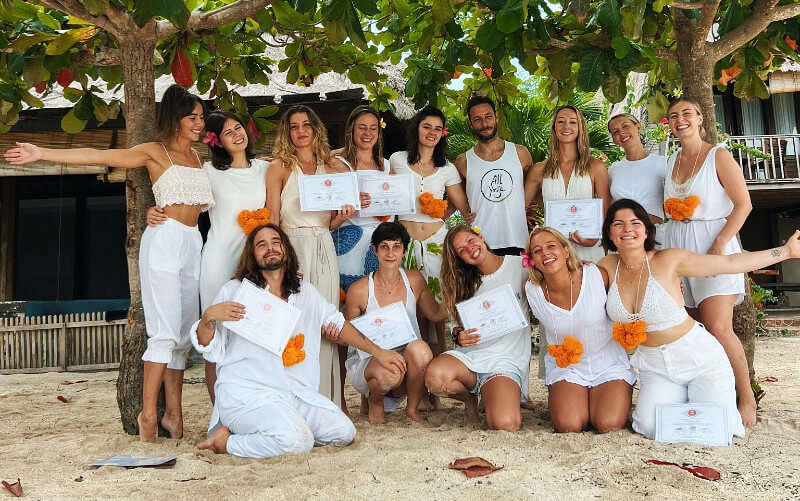
Now that you know what you want from a yoga certification course, and what to look out for, why not check out the200-hour All Yoga Teacher Training before you make your final decision? Here are some of the highlights:
1. Highly experienced leaders in the Yoga Instructor Certification Course Industry
All Yoga has been training yoga teachers for over 10 years now, and certifies hundreds of successful graduates each year. With so much experience and feedback from so many students, the course has been improved and refined over the years to deliver the best quality training to our students.
2. Small class sizes
All Yoga limits the number of students per yoga teacher training to a maximum of 20-22 students. This ensures personalized attention and guidance for each student, as well as hands-on support, and means that students can develop close bonds with their peers.
3. Train in Ashtanga-Vinyasa yoga
We have chosen to focus on Ashtanga-Vinyasa yoga because it gives you a strong foundation in yoga knowledge (including yoga history and philosophy), as well as improving your strength, flexibility and discipline (your focus). Since you learn a set sequence, training in Ashtanga-Vinyasa also gives you a foundation from which to create your own sequences (and therefore the ability to teach Vinyasa yoga), as well as the confidence to begin teaching immediately (since you already have a class sequence and don’t need to come up with – and learn by heart – any new ones).
As an Ashtanga teacher you may also have an advantage since you are able to teach a relatively ‘niche’ style (there are far fewer Ashtanga teachers than Vinyasa teachers in most cities), whilst at the same time being able to teach Vinyasa and general ‘flow’ classes.
4. Stunning locations for our Yoga Instructor Certification Course
All Yoga teacher trainings take place in unique locations on the tropical islands of Bali and Thailand. The yoga shalas are reserved exclusively for yoga teacher trainings so students can practice yoga to the sound of the waves, enjoy a glorious sunset on the beach after class, and explore the culture and beauty of these countries on their days off.
5. International faculty of highly trained and experienced teachers
All Yoga’s teachers have been leading yoga teacher trainings for many, many years, and are passionate about sharing All Yoga’s vision and mission of creating a safe and nurturing environment for students to explore and develop on their own yoga journey. We also bring in guest teachers for certain topics; these teachers are international experts in their field, highly experienced in yoga teacher trainings, and share All Yoga’s values.
6. Global network and community
At All Yoga, our yoga teacher training courses are always fun and nurturing. With the addition of group bonding activities, students have the opportunity to grow into an extended family of yoga lovers from all over the world, who are there to provide their support and friendship. This support network remains in place even after graduation, as alumni are encouraged to share their successes and are even provided with a platform to promote their own yoga course through our website.
Step 5: How to prepare for your yoga instructor certification course.
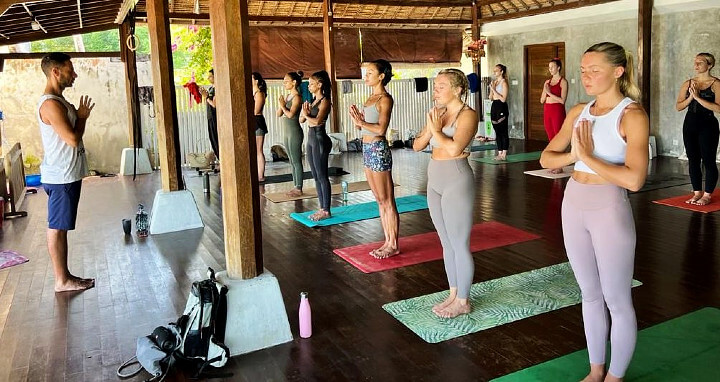
By now you’ve hopefully decided on which yoga teacher training or school you would like to attend, and you know where and when you want to go. Maybe you’ve even thought about your onward travel plans and accommodation. But how should you start preparing yourself for this life-changing experience?
1. Set aside your expectations for the Yoga Teacher Training Course
One of the best tips for preparing for a yoga instructor certification course is to arrive with an open mind; be open to the experience and the process, and you will have a far more enjoyable time than someone who resists, or comes with loaded expectations or preconceived ideas of how a training ‘should’ be. This includes setting aside what you think you already know about yoga, as every teacher you meet has a different perspective and something you teach you – and this might contradict what you have heard or been told by your current teacher.
Be open to learning, and respectful of the skill and experience of your teachers. On the other hand, try to also set aside your insecurities – everyone feels ‘imposter syndrome’ at some point in their lives, and we all have to start somewhere, so have some humility, embrace a beginner’s mind, and be kind and patient with yourself on the journey.
2. Be prepared to face your emotions
If you have never done any inner work before, nor practiced meditation consistently, it may be quite confronting how emotional you may feel during the yoga instructor certification course. We are not generally taught to face and sit with our emotions, but you will be asked to do this during the training (in a safe and supportive environment). Try to embrace this unique opportunity (when else will you have so much time to meditate, go inward, and reflect on your emotions?), and to trust in the process. You will have plenty of support from your teachers and fellow students, who will be going through the same process.
3. Maintain your fitness
As you will be practicing yoga for several hours a day in a hot climate, the yoga course will be intense physically, so it’s a good idea to make sure you are in good enough shape that you won’t be struggling too much, and so that you don’t injure yourself. Ideally, at least 3 months before the yoga instructor certification course , you would make sure you are practicing yoga consistently (by that we mean at least 3 times a week, for at least an hour) – unless you are already doing so, in which case, keep it up!
It’s also a good idea to start practicing the style that you will be training in, so that you will have more of an idea of what is expected physically (and, if you are training in Ashtanga-Vinyasa, so that you have an idea of the primary sequence before the training begins). By doing so you will also have an idea of what poses you need modifications for, which will then help you understand…
4. Bring any props you will need for your Yoga Instructor Certification Course
… what props you need! If you know you require a block, for example, then check with the school what props will be available to use (if any). If you need to bring your own, make sure you factor this into your luggage allowance (for the flight, boats you might be taking, etc.).
5. Bring appropriate medication
Besides any regular medication you take (make sure you have informed the school if you have any health issues, and that you have enough medication to last the whole training), it’s also a good idea to bring general travel medication (including rehydration salts/electrolytes, Imodium, and something for diarrhea, coughs, fevers, flu or sore throat) as you may not have time between classes to get to a pharmacist, there may not be one close, or it might not sell what you need.
Just as important to remember is adequate sun protection (high factor sun cream) and after-sun care for if you do burn (but please try not to, as it will not be fun trying to do yoga covered in sunburn!).
6. Pack appropriate clothing
Consider the climate of the place you will be training, including the time of year, temperature at night vs during the day, etc., and, if you are travelling after the training, will you be staying in the same climate or will you need different clothes?
For the training itself make sure you pack appropriate yoga clothes (bearing in mind the temperature again – yoga shorts might be better in some cases than long pants), and enough of them, as you will be sweating a lot and may need to change at least twice a day. On the other hand, you don’t need to overpack, as there are laundry facilities in most towns/hotels, but make sure your budget allows for this too.
7. Book everything you need
If you haven’t already, make sure you know what is included in the training cost (e.g. accommodation and food) and book any accommodation and flights you need. Many trainings offer airport transfer to the venue, but check beforehand, and plan out how you’re going to get there if necessary.
8. Check visas and travel restrictions
Hopefully you have checked already whether you need a visa for the training destination and any vaccinations you might need, so now is the time to get your visa, and to book in for any vaccines you need in plenty of time.
9. Prepare your intention
Finally, come back to the intention you set when thinking about which yoga instructor certification course to choose. If you didn’t set an intention before, then now is the time! This will be really helpful when things become challenging on the yoga instructor certification course (whether that’s due to the intensity of the experience, or if it’s the first time you’ve travelled alone); to remind yourself why you are here, and what this training will mean for you.
Step 6: Make the most of your Teacher Training for Yoga.
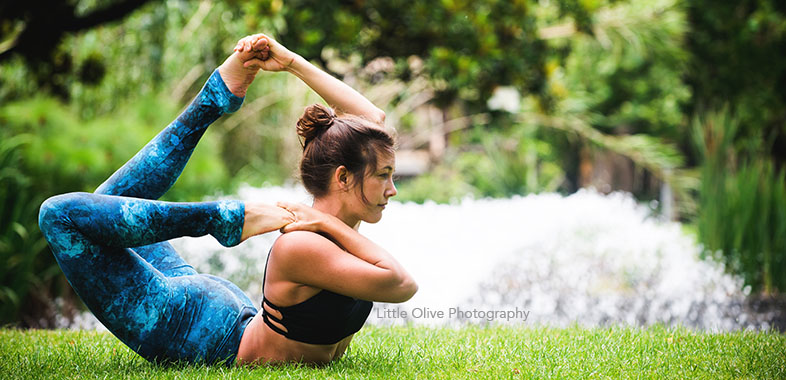
Congratulations! You’ve taken the leap and decided to undertake a yoga teacher training. If this is your first teacher training for Yoga, chances are you’re feeling a little in the dark about what to expect. Maybe it’s been years since you’ve been a ‘student’ and you’re wondering if your brain can even retain new information anymore. Then there’s the travel factor. If you’ve booked your teacher training for Yoga oversea, then you’ll be traveling away from your friends and family to a foreign destination, potentially for the first time. There’s a lot to consider!
To help you navigate the unfamiliar waters, here are some tips that I found helpful when embarking on my own YTT.
1. No Expectations Are The Best Expectations
I think this is the number one tip that any teacher trainee would offer. Even if you’ve had friends take the exact same training, the experience will vary hugely from one person to another. Try to keep an open mind and arrive without too many pre-conceived ideas of what your training will be like.
Teacher training for Yoga is different to a yoga retreat. If you’ve enjoyed A Yoga retreat experience in the past, you’ll probably find teacher training for Yoga to be more intensive – and it’s supposed to be! Your yoga trainers have a lot of content to fit into each day! Conversely, if you work yourself into a fearful frenzy beforehand and worry that your asana practice won’t be up to scratch, you’re already starting on the wrong foot. Don’t think too much about it – if anything’s going to teach you to live in the moment and without attachment, it’s the experience you’re about to have.
2. Your Teachers Are There To Help You
It’s easy to be awe-struck by your teachers on training – I certainly was! To a teacher trainee, our fearless leaders seem flawless and it’s easy to get in our heads about asking ‘silly questions’. Remember there’s no such thing as a silly question! If you’re curious about it, or you’re struggling with it, chances are somebody else is too – don’t be shy, ask away. Whether it be asana alignment or yoga philosophy, having an enquiring mind will help you get the most out of your teacher training for Yoga. Which brings me to my next point…..
3. Write Stuff Down
…because trust me, you’re definitely not going to remember it all! And six months later when you’re teaching your own classes back home, it’s going to drive you crazy trying to remember the name of that guru/kriya/asana that you learned about on your training.
4. Don’t Rush Your Body
We all come to teacher training with varying levels of physicality and strength in our asana practice. The biggest learning that I took home from my teacher training was this: Yoga is so much more than asana practice. It’s only one of the eight limbs! That means there are SEVEN whole other aspects of yogic living that you can work on cultivating, during your teacher training and beyond. If you can’t get into sirsasana and your classmates can, don’t sweat it. Take the opportunity while you’re on your training to practice compassion towards yourself.
Teacher training can be physically tiring and I actually found I became less physically flexible on my training. It’s normal. You have the rest of your life to work on your tight hamstrings or your tense shoulders – but you have a pretty unique opportunity to work on opening your mind while you’re completing a training. Practice and all is coming.
5. Be Prepared For Life On The Fast Track
Lastly, I’d like to give you all a heads up about the changes you may or may not experience in your life immediately after a teacher training. Completing a teacher training for yoga is a means of holding a mirror up to ourselves – we start to notice things that perhaps were always there, but we never saw before. You might be inspired to let go of things in your life that you suddenly realize weren’t really serving you – this can mean relationships, jobs, or long-held habits. A yoga-teaching friend of mine told me before I went on my training to ‘buckle up and enjoy the ride’ – she was right!
For me, the changes were subtle but substantial. I now have a daily yoga practice and I teach yoga to others. These two things alone have given me a greater connection to others, richness in my daily life, and a sense of peace that I didn’t have before. It’s a new way of living with yourself and the world around you, and I can’t recommend it highly enough.
Namaste yogis, enjoy your practice!
– Holly
Step 7: Yoga Instructor Certification Check list.
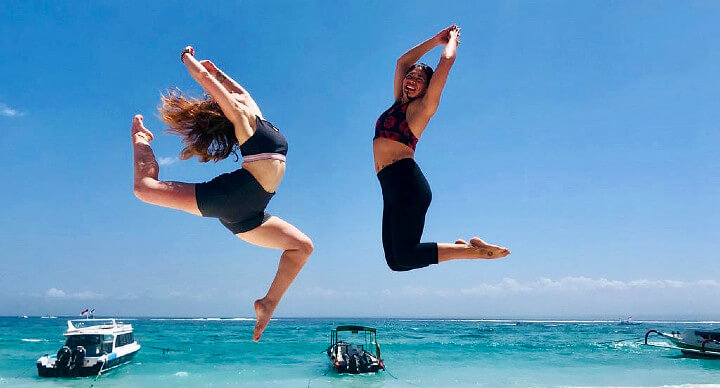
-
You’re almost there! Before you quit your day job to become a yoga teacher and #liveyourbestlife (!), take a quick glance at our handy checklist to make sure you’re fully prepared and ready to go…
- Fill in the training application form
- Save your spot with a deposit
- Book your flights
- Book any accommodation needed (check with the school what’s included first)
- Make sure you have the budget for food and laundry
- Transfer money into the correct currency (if you’re taking cash)
- Get visas if needed
- Get vaccines if needed
- Buy any books or required reading (the school should give you a list)
- Start practicing regularly 3 months before the training
- Try out the style you are training in!
- Prepare any medication you want to take with you
- Book airport transfer or make sure you know how you’re getting to the place
- Pack your bags! Make sure you have adequate sun protection, yoga clothes, and any props you need
- Have an amazing time 😊
